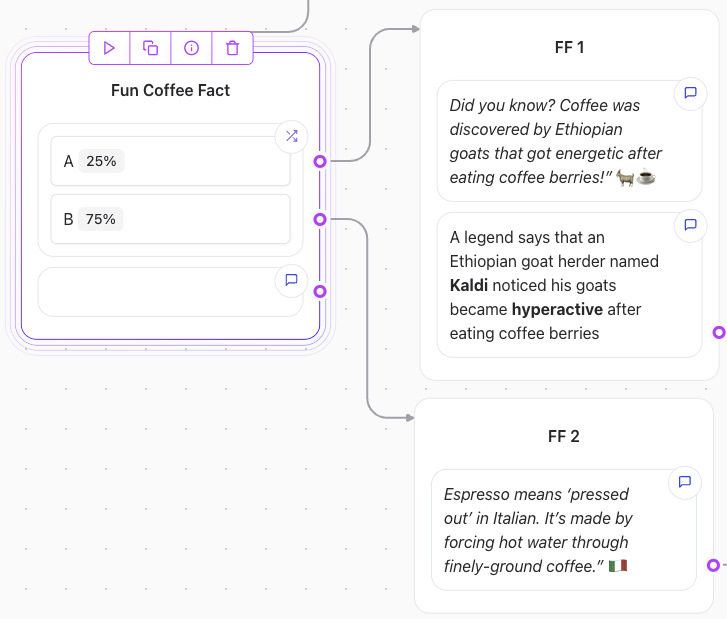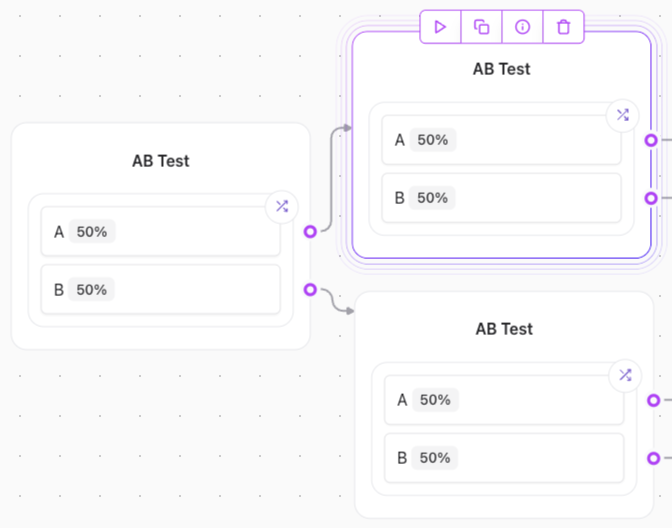Features of the AB Test Block
-
Randomized Path Distribution:
- The block allows you to assign percentages for how users are split between two paths (e.g., 75% for Path A and 25% for Path B).
-
Customizable Percentages:
- You can control the percentage of users directed to each path to meet your testing needs.
-
Expandability:
- For more than two paths, you can stack multiple AB Test blocks to create additional splits.
Use Cases
-
Response Optimization:
Test different replies or messages to see which generates the best user engagement.
- Example: Test a formal tone in Path A vs. a casual tone in Path B.
- UI or UX Variants: Test different layouts, buttons, or features to determine which version users prefer.
- Conversion Testing: Compare two or more paths to see which leads to better conversions, such as sign-ups or purchases.
Example Configuration
Simple A/B Test
- Path A: 25% of users follow this path.
- Path B: 75% of users follow this path.

Adding Multiple Paths
You can chain or stack AB Test blocks to create additional splits:- First AB Test block splits 50% of users into Path A and 50% into Path B.
- A second AB Test block further splits Path A into two sub-paths.

Best Practices
- Set Clear Goals: Define the success metrics for your A/B test (e.g., higher click-through rates or conversions).
- Use Balanced Splits Initially: Start with a 50/50 split to gather unbiased data.
- Adjust Percentages Strategically: Once one path outperforms the other, allocate more users to the better-performing path.